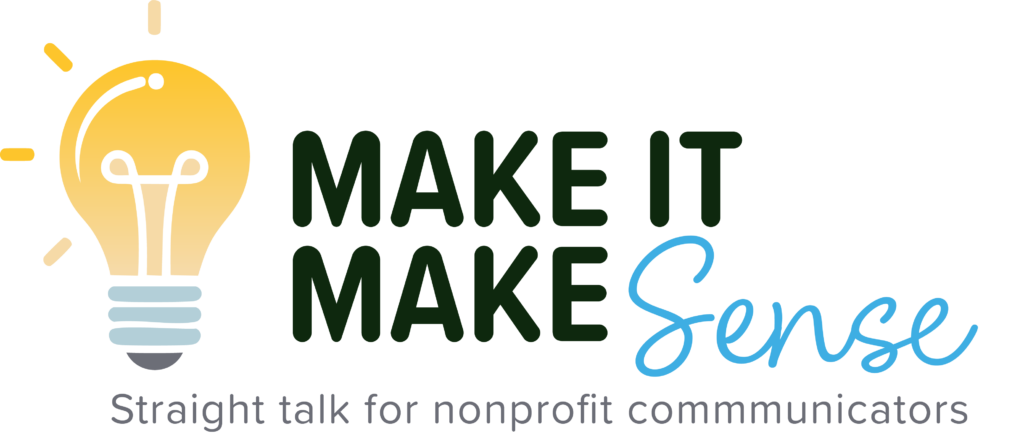Here are 20 Things That Weren’t in the Job Description.
Congratulations! You wanted to be a force for good in your community, and now you’ve landed an awesome job with that small and scrappy nonprofit everyone is talking about. This is why you got that super-specialized master’s degree and interned with local human services agencies for two years. You’re ready to dig in and do the work.
Surprise! Somewhere between grant reports, volunteer wrangling, and figuring out why the office printer only speaks in error codes, your executive director has asked you to write the monthly newsletter, update the website, post on Facebook, and “get the word out.”
I Hope You Brought Lots of Hats
You didn’t sign up for this. You like getting your hands dirty, working with people one-to-one, solving real problems in real-time. Maybe you’re really good at spreadsheets and getting people to show up to a community clean-up. But now here you are Googling “how to use Canva for beginners” at 10 p.m. on a Thursday and wondering if your email open rate is supposed to be that low (don’t worry, it is).
When it comes to small nonprofits, there’s a ton of mission, but there’s never enough budget, never enough staff, and never enough time. In the nonprofit world, there’s an unspoken belief that commitment to the mission gives you the superpowers necessary to do three or five jobs at a time.
And with funding for operations being increasingly difficult to secure (because funders, like you, are really interested in programs more than hype – as long as you hype them for funding the programs), those program-design positions become the de facto marketers. After all, someone needs to make the impact report look pretty. Someone needs to keep the Instagram feed fresh. And that someone, it turns out, is you.
You’re the storyteller. The social media manager. The web editor. The press release writer. The person who “just whips up a flyer real quick.” And don’t forget—you also need to make it look on brand, even though the brand guidelines are mostly just a single JPEG named FINAL_FINAL_FORREAL_THISONE_v3.
When the Job Creep Sets In
It’s exhausting. And yes, the stakes feel high. You’re trying to explain why your work matters, to attract donors, connect with your community—and do it all in a voice that’s compelling, consistent, and, God willing, typo-free.
There’s a hugely fallacious thing that can result: imposter syndrome (there’s also “multiple hat” syndrome). How many times have you thought maybe I’m just not cut out for this work or something similar? A few hours before I sat down to write this, I was sitting with a rockstar of a nonprofit programs specialist. She briefly shared that she was struggling with imposter syndrome, and the reason was obvious. Only a small portion of her job felt like it was what she signed up for. It was easy to relate. I told her that she’s got total Leslie Knope energy and the talent to back it up. I am consistently impressed by her efficiency, creative thinking, and ability to make every project a little more fun for everyone involved – all while crushing it every single day.
That imposter syndrome sets in while you’re doing the other stuff. When you’re spending 20 minutes trying to get the text and icon and photo to line up just right, but something in the software is snapping to an invisible grid that just doesn’t look right. It burns through you when the feedback you’re getting on the eighteenth draft is asking you to go back to language you suggested in the first. It’s also completely internal. Nobody else thinks you’re failing. If anything, they’re probably grateful that you’re picking up slack nobody else could.
So here’s your reminder: You’re not the only one going through this, and not knowing how to photoshop your boss’ ex-husband out of gala photos does not make you bad at the parts of your job that really matter. The ones that you did sign up for.
Some Days, Survival is Enough
This is the norm in small nonprofits. You’re doing your best in an environment that expects miracles with minimal resources. It’s okay if the newsletter went out a day late. It’s okay if your Instagram grid is slightly chaotic. Keep doing what you can. Use the templates. Google everything. Make friends at other nonprofits and share resources. Repurpose content. Post that photo even if one of your coworkers has their eyes closed. And when someone asks if you can “make this one go viral,” smile and ask if they’ve unlocked the algorithm yet.
When I transitioned from higher education and state government work to the nonprofit sector, I was shocked by how few dedicated communications professionals were in the industry. It didn’t take me long to realize why I was invited to all the social gatherings by my organization’s partners. But the real wow moment was when I attended a state-sponsored program for communications mentoring. I was recruited to be a mentor. I thought the other 25 people in the room where there to be mentors, as well. But someone asked for a show of hands: How many of you have formal training in marketing or communications? Two hands went up: mine and the speaker’s. In small group discussions, I learned that everyone else at my table thought they were there to get a mentor, not be a mentor. Oops.
So those of us with the knowledge set to work. We started building shared resources like message banks and shareable photos and graphics. We volunteered our time for underresourced orgs to run their content by us for advice. We coordinated happy hours to build camaraderie, to remind each other and ourselves that the job can be hard and worth it at the same time.
Something’s Gotta Give
OK, that’s enough waxing poetic about the woes of being the one-stop-shop for all your org’s programmatic and communications needs. Let’s get practical with some action ideas, too – something you can take back to your office if you think they’ll help you out of the quagmire of trying to do it all.
- Build shared resources. Coordinate with other industry nonprofits in your area. They’re in the same situation you are. Create a Slack channel to brainstorm and problem-solve together. Set up a Google Drive with local photos and videos that you and your partners can all use, so that you’re not relying on overly generic stock images. Develop a library of templates and messages that perform well. The more partners contributing to these resources, the less expensive and easier your work will be. And if improving the conditions of your community is the real goal, your boss will love it when you tell them that you’ve got 10 orgs speaking the same language (you know, the stuff that drives change).
- There’s no shame in using AI. There’s a tool for just about everything. You’re not a graphic designer, so use Canva’s AI. You’re not a writer so use ChatGPT. There’s a caveat to this, though: you’ve gotta use that generated content as a basis, not as a final product. Otherwise, you lose your org’s unique voice and authenticity. Yes, I’ve written about this already. A lot of great tools are free or very-low-cost for nonprofits, so look into available discount programs based on your organization type.
- Put it in the proposal. When your executive director is working on a grant proposal, encourage them to include some marketing costs into the budget. Funders may struggle with an operations-specific proposal, but adding 10% to a program proposal for anticipated marketing and communications needs just makes sense.
Big Takeaway: In This Org, You Might Be the Expert
Once you inherit a task at a nonprofit, it’s going to be near-impossible to shake it. No matter how much you knew about it before it was given to you, or how much you still don’t know after a year of good enough, the rest of your team is going to treat you as the resident expert in that thing.
But the worst thing you can do is fake it. Ask for help. Be open about your capacity and insist that your boss be clear about how comms goals should be prioritized against program goals. Give yourself grace, and don’t judge others when they don’t understand that effective marketing is harder than it looks.
You’re doing great, comms wizard. Even if the only magic you’re conjuring is the ability to get through the day.




